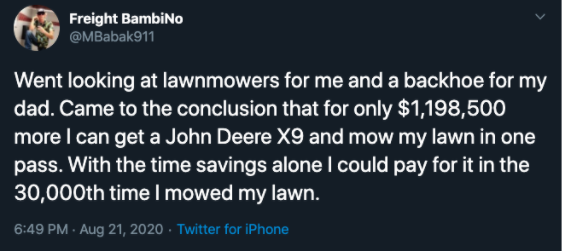Farmers Shouldn’t Buy Another Machine Until They Optimize the Use of Their Existing Fleet
New Paint.
It’s that time of year again for farmers to start thinking about buying new equipment.
But in the middle of a pandemic and during an ongoing trade dispute with one of America’s largest customers, should farmers really be forking over a half million dollars for a new combine?
Some people are doing just this. The new John Deere X9 combine is supposed to be the best thing since sliced bread wrapped around a better mousetrap.
The new X9 1100 can reportedly harvest 7,200 bushels per hour in high-yielding corn.
And who doesn’t want to get the corn out of the fields as fast as possible, since speed is the name of the game?
Well, any farmer who has experience dealing with bottlenecks with their grain carts and trucks knows that a faster combine doesn’t solve those problems. In many ways, a faster combine could spotlight inefficiencies in a farmer’s existing supply chain.
Before any farmer thinks about spending that amount of money on equipment, they should first take a hard look at their freight operations. Because a full combine combined with freight complications just creates a new set of headaches.
Unrealized Gains Ahead
When purchasing a combine, farmers have to ask themselves if this speed is actually the metric on which they will judge their return on investment. If a farmer collects all of the harvest, but cannot locate their trucks to pick up the grain – then what is the point?
There can be consequences of paying a premium price for premium equipment. For example, the failure to realize premium efficiency gains.
For example, I was on Twitter last week, and read the following about the X9 Combine.

Farmers require adequate transportation resources and the ability to get their grain to market quickly to realize incremental gains in price.
FOB, farmers need to get as good as they can at orchestrating harvest and managing harvest logistics. We all know harvest will never go perfectly but with the data and technology available today, we should be able to mitigate as many problems as possible and pivot accordingly when it is needed.
FOB allows a farmer to orchestrate harvest logistics, onboard the harvest team, proactively load a harvest game plan in FOB, gain real-time visibility in their statuses from the cab of the combine, and make adjustments to the harvest game plan on the fly, all of which can be done in one application, housing your team and communications privately.

